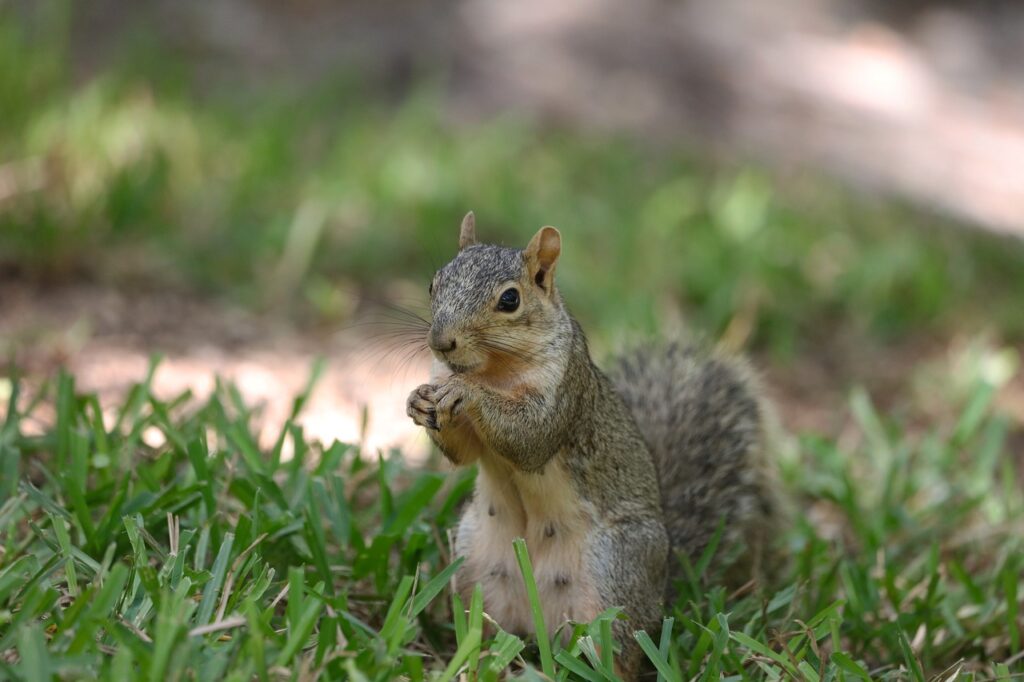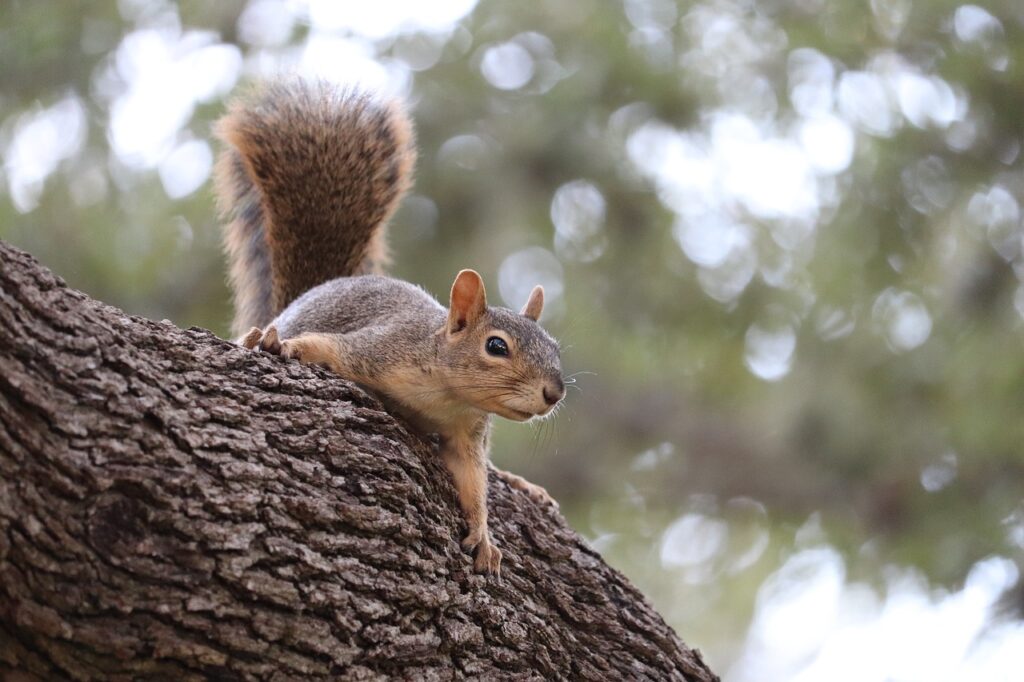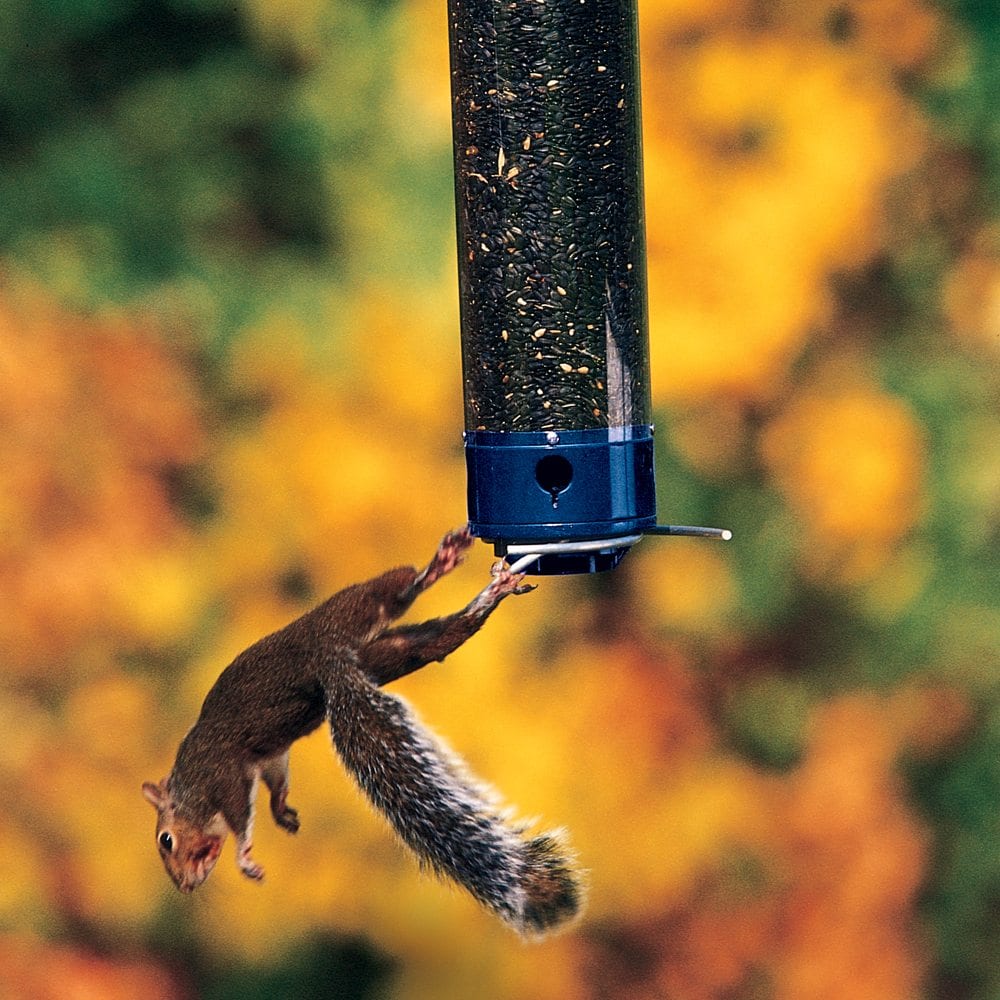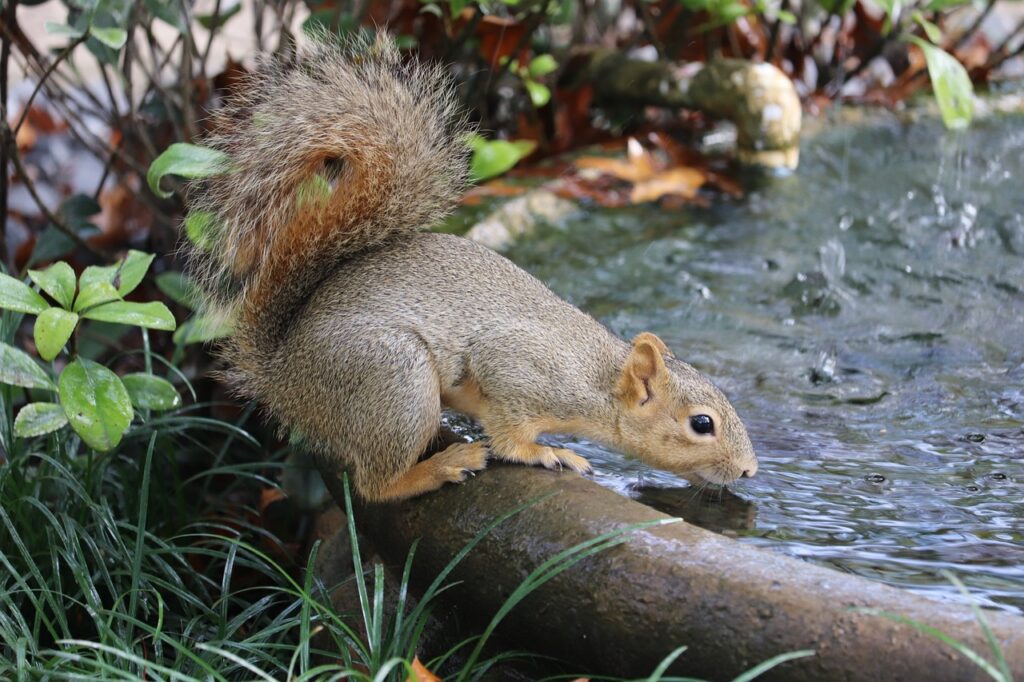Love them or hate them—or anything in between—squirrels are around, and we must learn to co-exist with them. This is especially true if we live in a rural area, like Big Bear Lake. And if we put up a bird feeder in our yard, it can be a beacon to our fluffy-tailed friends. But instead of fighting the squirrels, what if we made peace with them, and made them a part of our backyard ecosystem? Here are a few thoughts on how to make friends with the squirrels in your area without them becoming a nuisance.
Why Make Friends with the Squirrels?

No, we’re not talking about turning you into a Disney character, who sings to birds and small critters as they gather around you. We mean “making friends” in the sense that you enjoy—and help—the squirrels in your yard in a way that they don’t become a nuisance.
Why make the effort? Simply put, squirrels are more than cute; they are a vital part of our ecosystem. Their signature behavior—collecting and storing seeds and nuts—contributes to forest regeneration. Their forgotten caches of seeds and nuts grow into new plants and trees, and the forest populates with fresh greenery.
Another reason to become friendly with squirrels is because they need us as allies. Climate change and land development has led to some squirrels becoming endangered in certain areas. Deforestation has robbed them of natural habitats, shelter from predators, food sources, and safe places to raise their young.
How to Live in Peace with the Squirrels in Your Yard

It’s hard to want to make peace with the squirrels in your yard when they’re causing a ruckus. Tearing up your vegetable gardens and spilling the seed out of your bird feeder isn’t good guest behavior. Thankfully, it doesn’t take much to prevent these behaviors and invite these critters without the carnage. Plus, they provide us with a ton of cute antics to watch!
Prevent squirrels from getting into your feeders

Before you invite squirrels into your outdoor space (as if they need an invitation!), finish these housekeeping tasks. Make sure bird feeders are secure, and squirrels can’t access them, causing a mess of spilled seeds and deterring birds. One way to prevent this is to invest in a squirrel-proof bird feeder. (Stop by the Chirp store to shop our selection of squirrel-proof feeders!) These feeders keep the squirrels away without harming them. And some, like the Droll Yankee bird feeders, can also be entertaining to watch!
Keep squirrels out of your edible garden
Our bushy-tailed friends love to munch on fresh vegetables—who doesn’t? But it’s frustrating to spend weeks and months growing veggies only to have these little bandits gnawing on the goods! Stop this from happening by using bird netting, chicken wire, or row covers over your crops. Some gardeners use homemade squirrel repellant—with ingredients like capsaicin (from hot peppers), peppermint oil, and/or vinegar—with varying success.
Feed squirrels their favorite foods
Distract squirrels from your feeders and fresh veg with a food station just for them. Make sure to set it up far away from your feeders and garden. Then stock it full of their favorite fare: sunflower seeds, peanuts, and corn.
More Squirrel-Friendly Do’s and Don’ts

DO keep squirrels out of your home by sealing or blocking any entry points.
DO keep your outside trash cans closed with a lid and secured with a bungee cord.
DO use a baffle on bird houses and nesting boxes to keep squirrels out.
DO provide a separate water source for the squirrels, away from your bird feeders.
DO leave brush and wood piles in your yard to provide shelter.
DO keep squirrels out of areas in your yard by growing plants with a strong odor. Garlic, leeks, and mint are all excellent choices.
DON’T put out too much food at once. Only put out enough squirrel food for a day, otherwise you risk the food spoiling or attracting other wildlife.
Good-to-Know Squirrel Facts
- Though squirrels do carry harmful pathogens, there are no documented cases of transmission to humans.
- Squirrels lose 25% of their buried food, which means more food for other critters—or more tree and plant growth!
- Often, when a squirrel snacks on your produce—like your juicy tomatoes— they are really looking for water. Place a dish of water or a shallow bird bath near the veggie garden to discourage squirrels from eating.
- Squirrels can smell food even when buried under a foot of snow.
- Squirrels can eat their body weight (about 1.5 lbs.) in a week.
- Western gray squirrels, like the ones in Big Bear Valley, use their tails for balance as they leap between trees.
- Flying squirrels are rare in the US, but can be found in certain areas, like the San Bernardino mountains.
Welcome Summer, Chirp-Style
Usher in summer with a Bird Walk with us. Join Chirp and likeminded bird lovers for a stroll through San Bernardino National Forest on June 8th. And after the walk, come back to the Chirp store for a complimentary, post-walk donut on us. We’ll also be raffling off special prizes, so don’t miss out!


